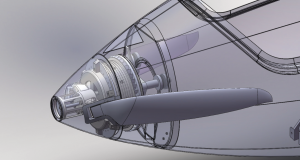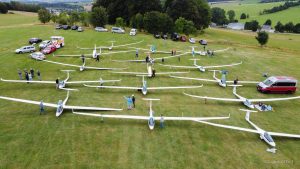Front motor configuration is aerodinamicaly more clean compared to typical retractable configuration as there is no additional drag of a pylon, so lower power is required for equal performance. Lower power means smaller motor and smaller battery packs. Alltogether this means less additional weight, and lower costs. We figured out that in the nose of modern glider fuselage, is just enough space to fit small but very powerful custom designed brushless electric motor.
ABOUT FES
Why choose FES?
Why choose FES?
Front
Electric
-
- Instant (RE)START – No warm up needed
- Much less noise – No loud exhaust noise
- Much Less vibrations
- Full torque from zero to max rpm (BLDC)
- No loss of motor performance at higher altitude
- CLEAN – No fuel pumps, filters, spark plugs nor carburetor icing
- Low carbon footprint
FES as self-sustainer or self-launcher?
FES can be both: self-sustainer or self-launch system.
FES as self-sustainer?
Only 4-5kW of power is required for level fligth of typical FES equipped single seater sailplane, and 7-8kW for double-seater. At higher power settings, good climb rate to safe altitude can be achived with any sailplane type.
FES as self-launcher?
It is very nice combination with light 13,5m or 15m sailplanes. High landing gear is required to provide sufficient propeller clearence for safe self-launch, also from grass runway. FES is aerodynamically very clean, so 22kW is more than enough power to provide good climb rate for light sailplanes.
Recently we developed also 30kW version of FES system, suitable to self-launch also heavier 18m sailplanes. With high landing gear also self-launch from grass is not a problem with LAK17C FES – EASA certified for selflaunch. Similar arrangment is tested also on Ventus 3 FES.

